
Out of Drought They Rise
February 24, 2020
Hello all, I wanted to start this newsletter out with an important event in Texas that Dr. Liz Haney and others are spearheading. The story below first ran in the January 23 edition of the Western Ag Reporter. It outlines the event and features a ranch making its way in the regenerative realm. Also, make sure to follow what Liz is doing by searching Soil Regen on Facebook and visiting her website at: https://www.agsoilregen.com/
By Kerry Hoffschneider
When drought struck Texas in 2011, feed and water were becoming sparse for many ranchers. Land managers had to adjust cattle herds and grazing plans in order to accommodate. These changes, while difficult at the time, were what set Deborah Clark and her husband Emry Birdwell down a regenerative agriculture path.
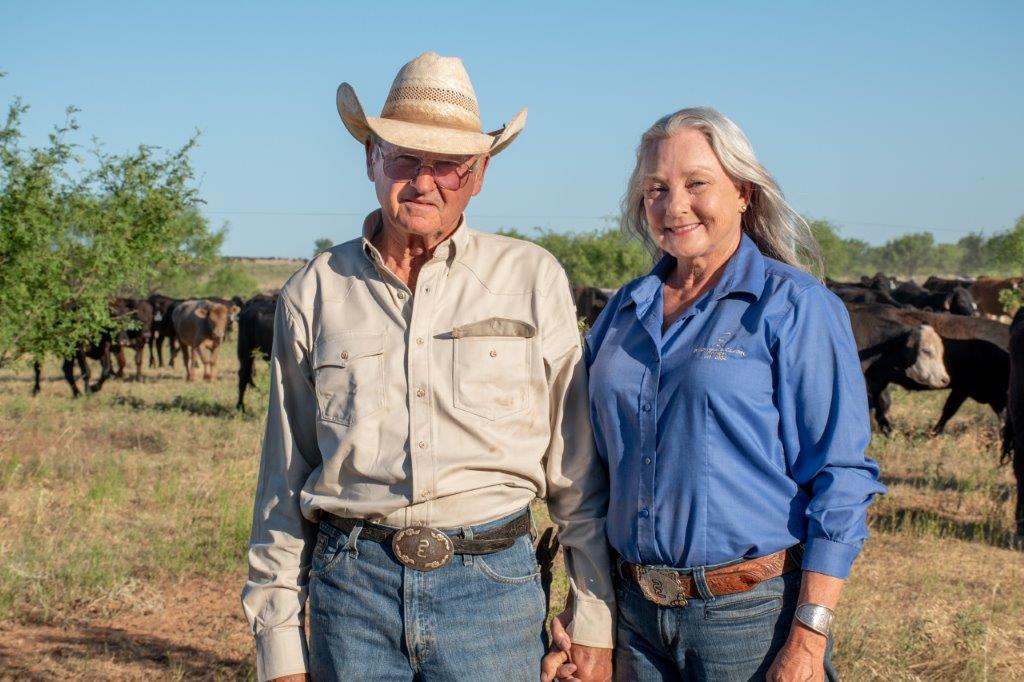
“We are a conventional ranching operating in a regenerative ag movement,” Deborah Clark said. “We have learned you are not being holistic unless you are talking about the whole picture.”
Today, Clark and her husband Emry Birdwell run a stocker operation of 5,000 to 7,000 head on their 14,000-acre ranch in Clay County, Texas. The couple applies principles of regenerative grazing and soil health to restore biodiversity and water quality and quantity, while working towards maximizing profits. But it wasn’t always that way.
“We say the drought is the best thing that happened to us – that one herd became the staple of our management,” Clark said.
New to the Business…
Clark worked with her family in the telecommunications industry and was on the cusp of the fiber optics explosion for the first part of her marriage. Then, when that 50-year business, started by her parents, came to an end, she and Birdwell decided to buy a ranch together.
“In the first 12 to 15 years of our blended marriage, I might have gone to Emry’s ranch ten times. I didn’t know the difference between a steer and a heifer,” Clark admitted. “Then, our (telecommunications) company was bought out with a lot of promises made. They ended up bringing us into bankruptcy in a short amount of time. I had a pocketful of change and no purpose.”
After connecting with a well-respected friend, Joe Parker and his wife Marjorie, to find some ranch land in Clay County, Clark and Birdwell started their ranching journey together.
When the couple first started, they were running one herd of 2,000 head. Upon buying more cattle and dividing the ranch into three separate cells, they built their numbers up to between 5,000 and 6,000 head. Each cell was approximately 4,000 acres and held its own herd.
A Season of Change…
“Emry encouraged me to take some holistic management courses,” Clark said. “He had been a student of Alan Savory and was already adopting many of those grazing management practices.”
Clark said it really started to click for her when they went to a Ranching for Profit Course by Dave Pratt. This course, she said, gave her an “ah-ha” moment regarding the business of ranching. It also helped connect the couple to a network of people who could share support and ideas through a program called Executive Link.
“When the drought of 2011 hit, we realized we were running out of grass and water. Emry recalled his training from Alan Savory – when in a drought, combine herds. So, we sold one herd and combined two and there were 3,400 in that combined herd. It was a scary, adrenaline rush working with that large of a group throughout the entire ranch in a holistic context,” she explained.
The ranch Birdwell and Clark purchased had been a traditional cow/calf program since the late 1800s and bore the characteristics and wear and tear that had occurred throughout the years such as bare ground, erosion and lack of diversity in forbs and grass, Clark said.
“When we started moving these cattle in the combined herds and allowed for high-density and short-duration of grazing with long periods of rest and recovery, the changes were eye-popping,” she recalled. Clark said aerial photos of the ranch tell the story the best.
“We have had many people during presentations gasp at the difference. We show a satellite photo we took in 2014 with bare ground and in 2015 and 2016 the photos show a stand of grass.”

Before implementing regenerative grazing during a drought period.

After implementing regenerative grazing during a drought period.
Clark said the bare ground on the ranch has been reduced by at least 95 percent and a healthy stand of native grasses have returned to much of the land. Little Bluestem, Indiangrass and Switchgrass are now common forages there.
“The day Emry found the Eastern Gamagrass, also called the Queen of the Prairie in our part of the world, it was so exciting,” Clark said. “Eastern Gama is nothing we planted, it was here all the time, it was just given the right conditions to grow.”
Creating Conditions…
The right conditions have been created by their practices. Through their fast-growing season, the herd of 5,000 is moved four to six times a day. Emry also designed a watering system on the ranch.
“The cattle had been mostly watered out of what we call surface ‘tanks’ in Texas,” Clark said. “These are bodies of water created to catch water. You can imagine what it looked like trying to water 3,400 cattle around these areas.”
That’s when Emry’s idea of a mobile water trough was born. With the installation of pipeline throughout the ranch, they were able to move water to areas that had not been grazed.
“He and his friend and contractor, Bobby Elledge, cut a propane tank in two and installed it with floats and valves and put it on a couple axels with wheels. We used poly pipe and began unrolling it across the ranch. The main water sources we use are two larger bodies of water on the ranch that we pump out of into the pipelines. It is essentially a water distribution system that goes across the ranch that is optimized by the mobile water trough.”
Not Without Challenge…
Clark said while they are making huge environmental strides, there are always challenges. Now the couple is considering how they can change their business paradigm even further to be financially successful.
“At our scale, the marketplace does not support us to be an all-natural producer. Would I like to move towards a more natural, grass-finished business? Yes. We are often in discussions about this and which direction to go and moving toward being more regenerative practitioners across the entire spectrum of our operation. If we want more people to enter this regenerative ag movement and understand the importance of soil health, we need to continue to develop the ‘how-to’ pathway to get there successfully all-around,” she said.
Clark said the things that keep her going on this regenerative journey are being with the cattle, going to conferences and gaining from the hope and inspiration of others’ experiences.
“And faith, you have to have a spiritual center to keep moving forward. It’s amazing how many times I type in, ‘soil health’ and I accidentally put, ‘soul.’ That’s what it’s all about.”
Regenerative Ag’s Brightest to Speak…
Clark is just one of the speakers tapped for the upcoming Regenerative Grazing for Restoration Conference at the Tenroc Ranch in Salado, Texas, February 19-20. The event, organized by Soil Regen, LLC and Texas AgriLife Research, will bring together land managers, researchers, agronomists and most importantly – farmers and ranchers interested in improving the environment and their pocketbooks. Conference organizers want Texans and others across the country to consider the positive impact they can make on their lands – in Texas alone, there are 770 million acres of rangeland that make up more than 65 percent of the state.
Another conference speaker is Dr. Rick Haney, founder of the Haney Soil Test. The Haney Test goes beyond commercial testing and accounts for nature’s soil extractant, water, and has an emphasis on soil microbes. Haney’s wife and founder of Soil Regen, Liz Haney, Ph.D., is spearheading the event. The couple are both passionate about educating farmers and ranchers on both the Haney Test and regenerative practices the test seeks to inspire.
“I am excited to be in the same room with researchers like the Haneys,” Clark said. “Their perspective about soil health is so important because they are actually measuring it. All my experience is subjective. I am excited to be in a room where I can hear other people talk about the impact their practices have had. That will help Emry and I decide what our next goals are. My goal is to share some of the challenges, setbacks and successes we have had.”
In addition to Clark and Haney, speakers at the event include keynote speaker, Gabe Brown – author of Dirt to Soil and partner in Understanding Ag, LLC. Brown owns and operates Brown’s Ranch, a diversified 5,000-acre ranch near Bismarck, North Dakota. Also presenting will be Dr. Richard Teague, Grazing Management researcher at Texas AgriLife Research and Extension; Jonathan Cobb, Holistic Management grass fed beef producer and HMI board member; Julia and Cody Spencer, ranch managers at Roam Ranch; and Dr. David Johnson, molecular biologist conducting research at the Institute for Sustainable Agricultural Research at New Mexico State University.
To find out more and register for the event visit: www.agsoilregen.com/events. You can also contact Liz Haney at (979) 229-7538.
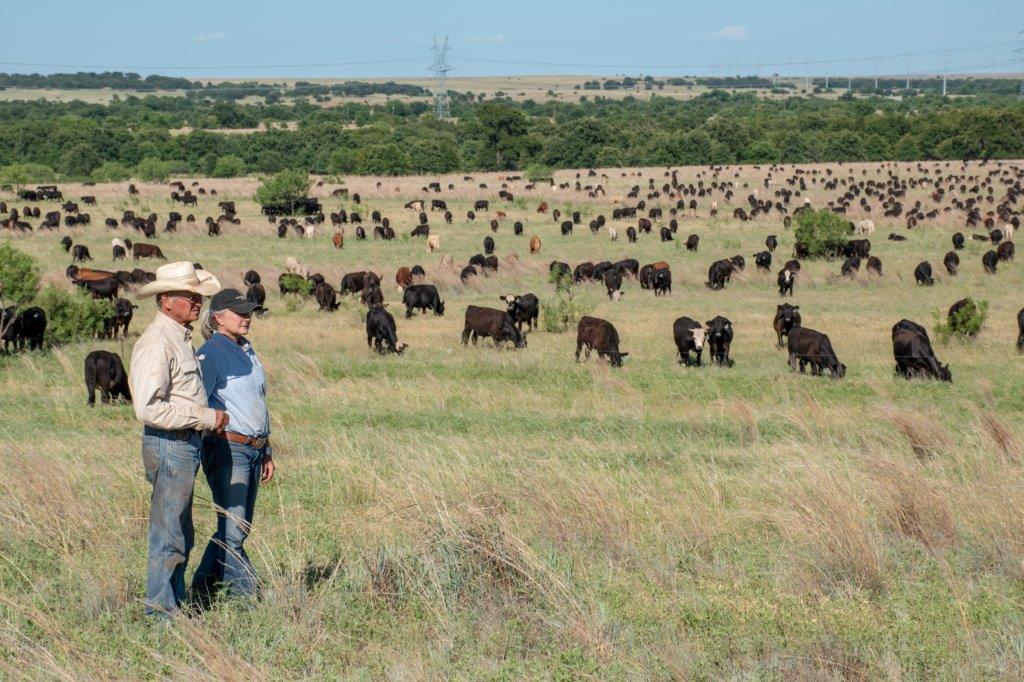
Cow Soil
This is a great article about bale grazing. At Ficke Cattle Company we call this making, “Cow Soil.”
https://www.progressiveforage.com/forage-types/grasses-and-grazing/bale-grazing-more-than-just-a-labor-saver

Sweet Potato Wisdom
By Nate Belcher

There are certain times in life where the darndest things can stop you in your tracks and leave you with more questions than answers. I had one of those moments just a few weeks back that made me ask myself questions that I would like to extend to you.
We were recently cleaning out a section of our basement where we store root cellar vegetables such as sweet potatoes, onions, garlic and potatoes. During the sorting process, I found a sweet potato that had dropped behind a shelf. I quickly noticed that it had shoots growing out of it! I didn’t think too much of it until I realized the sweet potato was from a harvest in July of 2017, and here were, January of 2020 – two-and-a-half years later!
Instantly I had an overwhelming thought come into my head that I could not shake, and it kept coming to the forefront of my mind for weeks following, “In God’s great design, plants want nothing more than to grow, thrive, and proliferate. How did we make it so complicated to grow plants?”
When we look at nature (and even the weeds in our fields) it is obvious that growing plants should be a very easy task, but most of us know that is not always the case. Throughout the course of the following weeks, the same answer kept coming to my head and that was, “Right plant, right place, right time and right objective.”
Simply stated, are we growing the correct plants, in the right environment, at an appropriate time with an objective in mind? Grains with forages? Fruit trees with poultry? Honey and beef? Hemp grain and pork? The sky is the limit.
I encourage you to open your hearts during these short days of winter and ask yourself what God could have in store for the soil you have been called to be a steward of. You might be surprised by the answer you receive.
Also, always remember – God truly wants us to have abundance, security, and to enjoy his creation.
https://hybrid85.com/
http://www.greenacrescovercrops.com/
Nate’s cell phone – (402) 580-0015
Insight into the SECURE Act 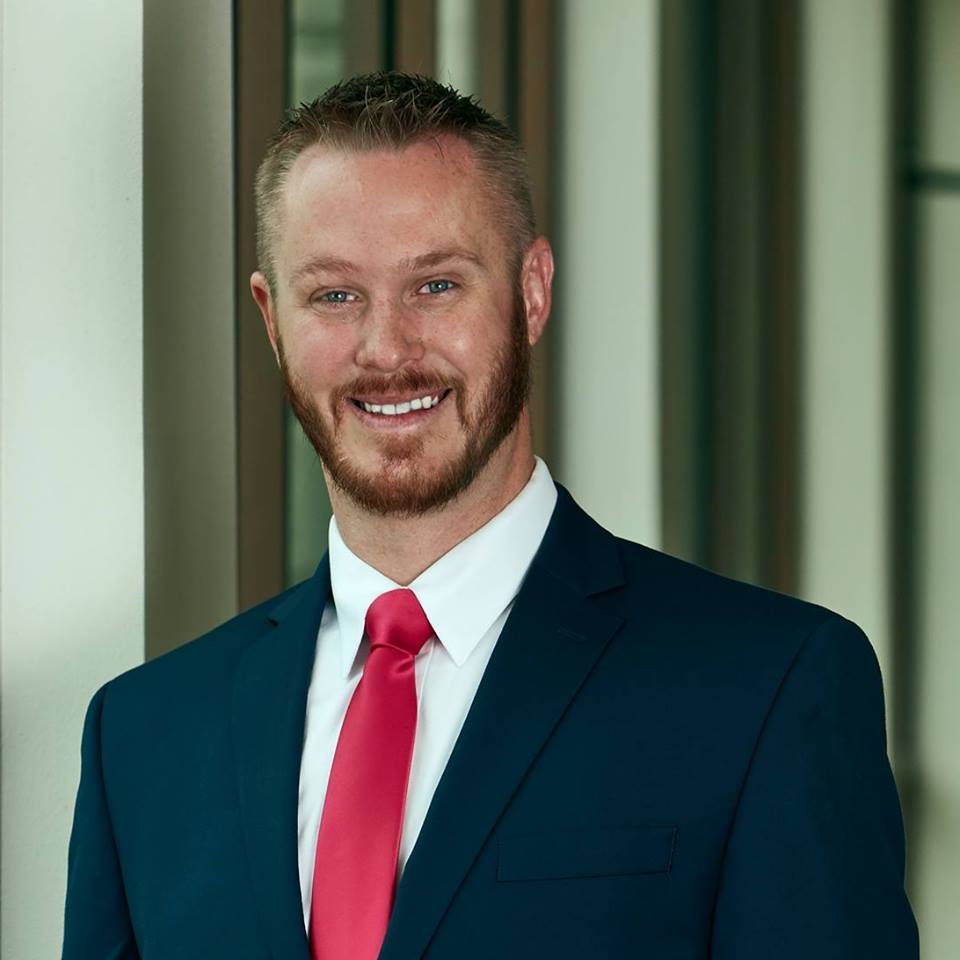 Kirk Peterson In December, the SECURE Act or Setting Every Community Up for Retirement Enhancement Act, was signed into law. This bill brings about some of the biggest changes in short-term retirement policy history and is aimed at strengthening retirement security for all Americans.The SECURE Act was constructed in hopes of increasing access to tax-advantage accounts and preventing American workers from outliving their retirement savings. Having gone into effect on January 1, 2020, we wanted to explain what changes are included in the bill and their impact on retirement planning. Kirk Peterson In December, the SECURE Act or Setting Every Community Up for Retirement Enhancement Act, was signed into law. This bill brings about some of the biggest changes in short-term retirement policy history and is aimed at strengthening retirement security for all Americans.The SECURE Act was constructed in hopes of increasing access to tax-advantage accounts and preventing American workers from outliving their retirement savings. Having gone into effect on January 1, 2020, we wanted to explain what changes are included in the bill and their impact on retirement planning.These are the key takeaways: Small businesses and 401(k)s – Many small businesses shy away from offering employer-sponsored retirement accounts because they can be expensive and challenging to administer. With the intention of eliminating these two hurdles, the SECURE Act tweaks a number of rules related to these types of tax-advantage accounts and offers tax incentives to small businesses for offering them to their employees. Part-time employees – Employer-sponsored retirement accounts have only been available to workers legally classified as an employee, which is designated as one full year of 1,000+ hours worked. With the passing of this bill, businesses are now able to broaden the scope of those eligible by offering 401(k)s to part-time employees who have three consecutive years of 500+ hours worked. Delayed Required Minimum Distributions (RMDs) – RMDs are the amount of money that the IRS requires investors to withdrawal from their qualified retirement plans upon reaching the age of 70½. In an effort to allow retirement funds to grow a little bit longer and eliminate the tax burden on distributions for another year and a half, the SECURE Act pushes back the age for which people need to take RMDs from 70½ to 72. 529 plan flexibility – The SECURE Act allows investors to make up to $10,000 a year in student loan repayments using money in a tax-advantaged 529 account. This allows parents who have money remaining in a college fund to help a child that has already graduated. Penalty-free 401(k) withdrawals – The option for investors to withdrawal up to $5,000 from a 401(k) penalty-free to help cover some of the expenses of having or adopting a child. Elimination of the stretch IRA provision – The stretch IRA provision of the past allowed non-spousal beneficiaries to gradually spread out their account distributions over the course of their lifetime. However, the SECURE Act now requires all non-spousal beneficiaries of IRAs to take a full payout from the inherited IRA within 10 years of the death of the original account holder which can have a big impact on beneficiaries given the tax burden the distributions can cause. This rule change only applies to heirs of account holders who pass away in 2020 or later. Annuities in 401(k) plans – There’s a provision in the SECURE Act that makes it easier for employers to offer annuities in their 401(k) plans. The upside to this is that annuities can be structured in a way that attains long-term income objectives for retirees. On the flip side, investors need to look meticulously at annuity providers and the fees associated with each to make sure they’re truly a good match. While the overall intention of the SECURE Act is a positive one and should allow more Americans to accumulate more money in their retirement nest egg, the removal of the stretch IRA provision and the offering of annuities in investor-lead accounts can present considerations to be aware of for some retirement plans. If you have questions on the SECURE Act and how it may impact your goals, please let us know. Phone: (402) 519-0330 kirkpeterson@woodburyfinancial.net Peterson Asset Protection Group https://www.petersonassetprotectiongroup.com/ |
Anchor Meadow Farm Update and Graze Master Beef Orders
By Emely Hendl 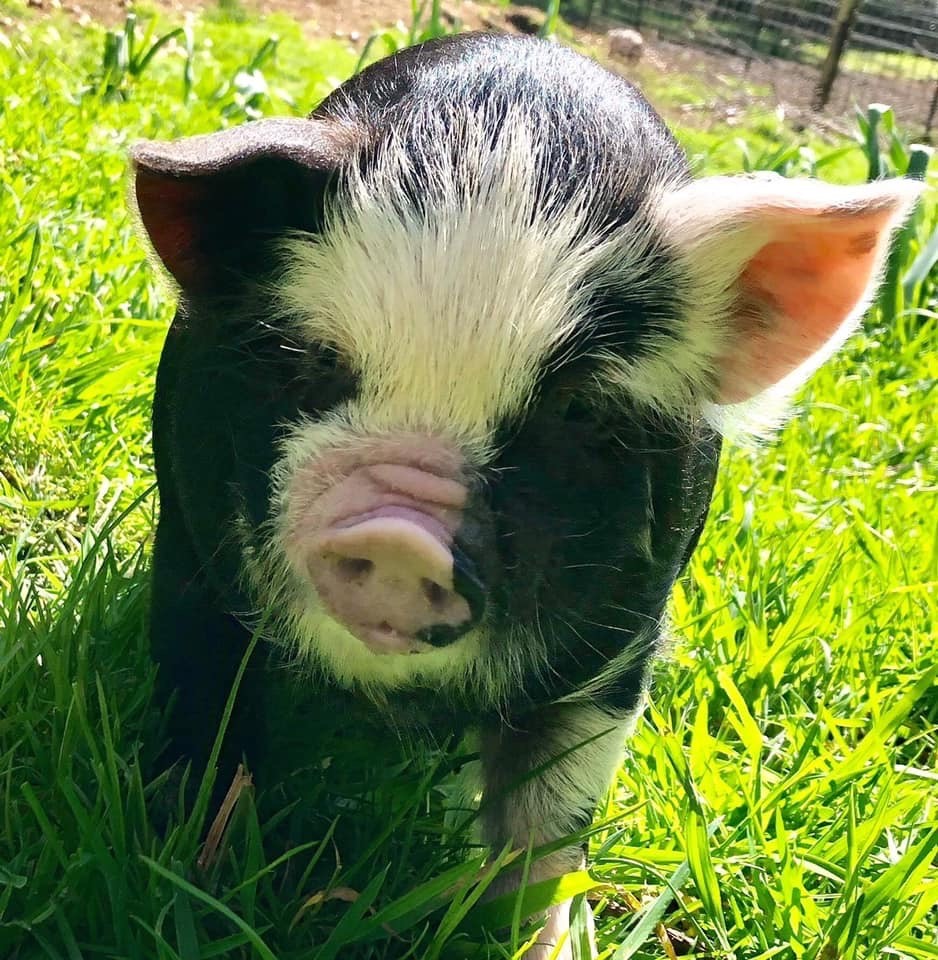 At Anchor Meadow Farm, we’re busy planning spring litters and early meat harvest of our pasture-raised pork. We believe that our large and in charge June, (featured in the photo above as a baby and all grown up) is pregnant from our November escape artist Lassen. She is looking rounder and possibly dropping – we’ll find out on March 1.
At Anchor Meadow Farm, we’re busy planning spring litters and early meat harvest of our pasture-raised pork. We believe that our large and in charge June, (featured in the photo above as a baby and all grown up) is pregnant from our November escape artist Lassen. She is looking rounder and possibly dropping – we’ll find out on March 1.
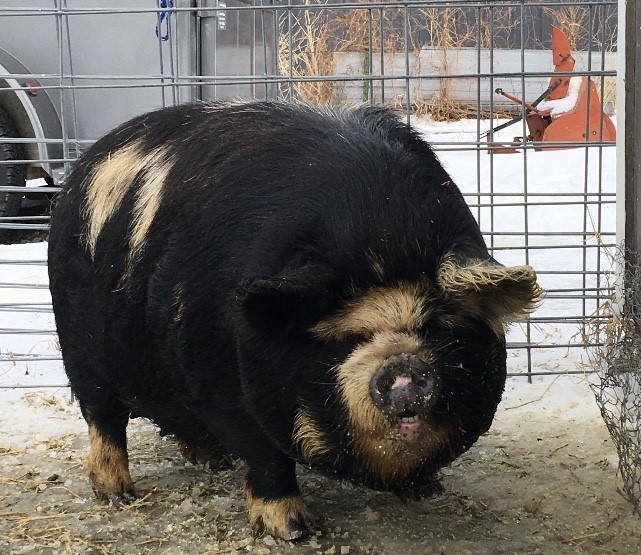 Pork cuts and prices should be announced by mid-February. Our heritage breed, pasture-raised pork will have a robust flavor with lots of beautiful marbling from the heart-healthy lard.
Pork cuts and prices should be announced by mid-February. Our heritage breed, pasture-raised pork will have a robust flavor with lots of beautiful marbling from the heart-healthy lard.
We can’t wait to share the lard, I mean love.
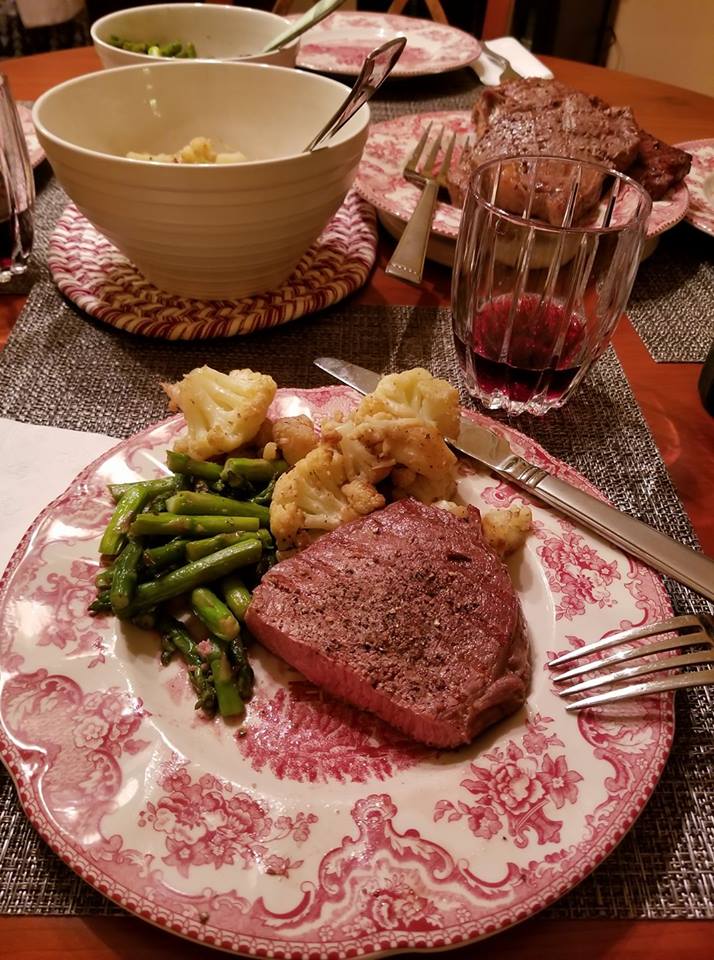
Graze Master Beef
If you want to place a meat order of any type, please contact Alyssa Ficke at (951) 212-5114.
You can also contact Emely Hendl for Graze Master Beef orders and their wonderful honey and great homemade honey products. Her number is – (402) 613-5483. As always, thank you for your continued support!
Thank you so much for reading!
No electronic or mechanical reproduction of The Liberator is permitted without direct consent of the author, Ficke Cattle Company. Contact (402) 499-0329 or fickecattle@outlook.com
